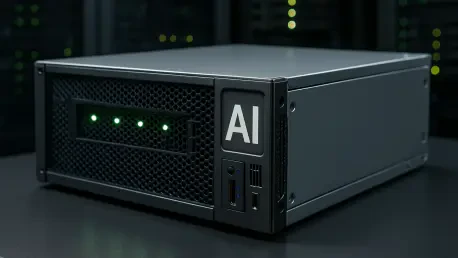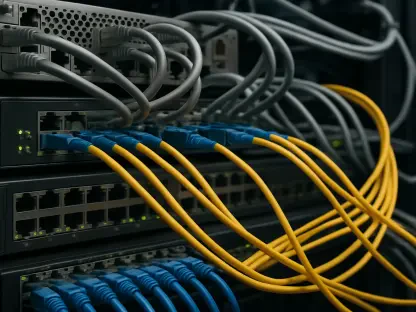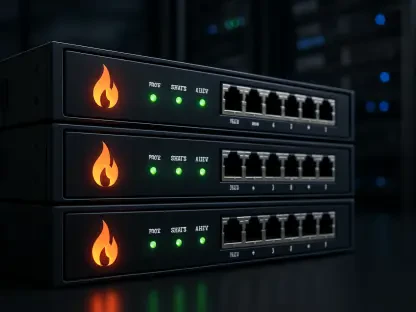In an era where artificial intelligence is transforming industries ranging from autonomous driving to smart manufacturing, the reliability of AI hardware has emerged as a cornerstone for safe and efficient operations. As these technologies become deeply embedded in everyday systems, the stakes for dependable performance have never been higher, with market projections indicating explosive growth in sectors like edge computing and robotics. Guoman & Partners, under the visionary leadership of Hanzhe Guo, has positioned itself as a key innovator in tackling the pressing challenges of hardware reliability. By pioneering advanced redundancy solutions and system-level design strategies, the firm addresses critical needs in environments where failure is not an option. This focus not only ensures operational stability but also aligns with stringent regulatory demands, setting a new standard for AI hardware development. The efforts of Guoman & Partners highlight a growing recognition that robust hardware is essential for the successful deployment of AI technologies across diverse applications.
Addressing the Reliability Imperative in AI Hardware
The rapid expansion of AI-driven markets has intensified the demand for hardware that can endure unpredictable conditions while maintaining consistent performance. Industry forecasts project the global Edge AI hardware market to surge from USD 26.14 billion currently to USD 58.90 billion by 2030, reflecting a compound annual growth rate of 17.6%. Similarly, spending on edge computing is expected to reach USD 378 billion by 2028, underscoring the scale of investment in these technologies. Such growth amplifies the urgency for systems that can operate flawlessly amidst environmental stressors like rain, fog, or electromagnetic interference. Guoman & Partners has risen to this challenge by prioritizing reliability as a fundamental design principle. Their approach focuses on creating hardware capable of withstanding operational rigors, ensuring that AI applications in autonomous vehicles and industrial settings meet both safety and performance expectations in an increasingly competitive landscape.
Beyond market dynamics, the technical hurdles in AI hardware development present complex obstacles that require innovative thinking. Environmental factors often disrupt sensor functionality, while evolving regulatory standards for autonomous systems add layers of compliance challenges. Additionally, developers face pressure to balance rapid product iterations with cost-effective scalability. Guoman & Partners tackles these issues through cutting-edge strategies like sensor fusion, integrating data from cameras, LiDAR, radar, and inertial units to maintain perception even if individual components fail. Their designs also incorporate dual computing paths and redundant controllers for seamless failovers, alongside robust power systems to handle stress. These measures aim to minimize downtime and extend hardware lifespan, ensuring continuous operation under demanding conditions. By addressing these multifaceted challenges, the firm helps clients navigate the intricate balance between innovation and reliability.
Innovative Strategies for Enhanced System Stability
Under the guidance of Hanzhe Guo, Guoman & Partners has developed a suite of sophisticated techniques to bolster AI hardware stability. One standout method involves multi-modal integration, which combines diverse data inputs to create resilient systems that adapt to component failures without compromising functionality. Additionally, the firm employs advanced thermal management and load balancing to prevent overheating and optimize performance during intensive operations. Redundant power designs with multiple rails and filters further safeguard against disruptions, ensuring systems remain operational even under strain. These strategies collectively aim to eliminate single points of failure, a critical concern in high-stakes applications like autonomous driving and edge computing. By embedding such robust mechanisms into their designs, Guoman & Partners enables clients to deploy AI solutions with confidence, knowing that reliability is built into every layer of the hardware.
The measurable impact of these innovations is evident in the firm’s client outcomes, which demonstrate significant improvements in development efficiency and system performance. Projects led by Guoman & Partners have achieved a 20–30% reduction in R&D timelines through streamlined design and testing processes, allowing faster progression from concept to market. Rework instances have dropped by more than 25% due to rigorous early-stage reliability assessments, saving time and resources. Most notably, system uptime has reached an impressive 99.99%, reflecting the effectiveness of eliminating vulnerabilities in design. These advancements have also enabled clients to secure funding milestones ahead of schedule, facilitating timely market entry while managing lifecycle costs. With Guo’s expertise in GPU server architecture and sensor integration informing these solutions, the firm continues to set benchmarks for practical, dependable hardware in AI applications.
Shaping the Future of AI-Driven Industries
The broader implications of Guoman & Partners’ work extend far beyond individual projects, influencing the trajectory of industries reliant on AI technologies. Their emphasis on bridging conceptual designs to practical implementations supports advancements in autonomous vehicles, robotics, and edge computing, where reliability is paramount for safety and success. By helping clients adapt to industry shifts and regulatory landscapes, the firm ensures that AI systems are not only innovative but also viable for real-world deployment. This alignment with market needs reflects a deeper understanding that hardware reliability is a foundational element, not merely a technical requirement. As AI applications continue to proliferate, the strategies developed by Guoman & Partners serve as a blueprint for creating systems that can keep pace with rapid innovation while prioritizing operational integrity and user trust.
Looking ahead, the vision championed by Hanzhe Guo points toward intelligent systems inspired by neural pathways, featuring interconnected backup mechanisms for seamless recovery and performance. This forward-thinking approach anticipates the evolving demands of AI-driven markets, where hardware must not only meet current standards but also adapt to future challenges. Guoman & Partners’ commitment to pioneering such solutions positions them as a vital contributor to the safe expansion of AI technologies. Their efforts underscore a unified industry perspective that as applications grow in complexity, the need for dependable hardware will remain a critical focus, requiring continuous innovation to address both technical intricacies and compliance pressures. This dedication ensures that the firm’s influence will resonate across sectors, driving progress in the years to come.
Reflecting on Milestones and Next Steps
Looking back, Guoman & Partners has demonstrated remarkable strides in elevating AI hardware reliability through redundancy and system-level design strategies. Their work has resulted in substantial gains for clients, including faster R&D cycles, reduced rework, and near-perfect system uptime, which have proved instrumental in achieving market readiness. Under Hanzhe Guo’s leadership, the firm has tackled complex environmental and regulatory challenges, delivering solutions that fortify the foundation of autonomous and edge systems. These achievements highlight the critical role of dependable hardware in sustaining the momentum of AI advancements. Moving forward, the emphasis should shift toward scaling these innovations to address emerging needs, exploring adaptive systems that evolve with technological and market shifts. Collaboration across industries could further amplify impact, ensuring that reliability remains a priority as AI continues to redefine operational landscapes.









